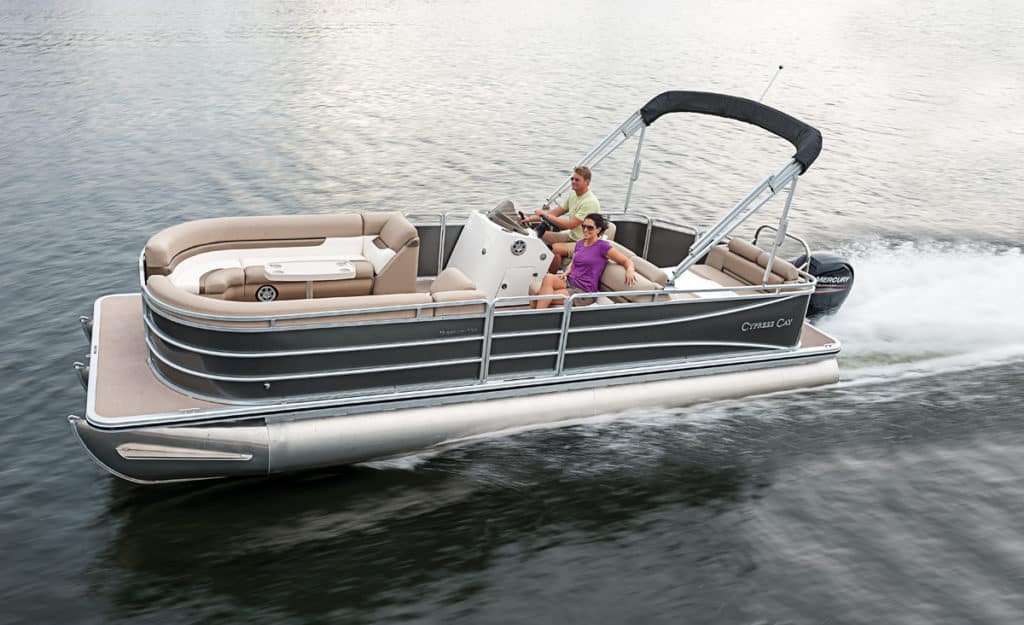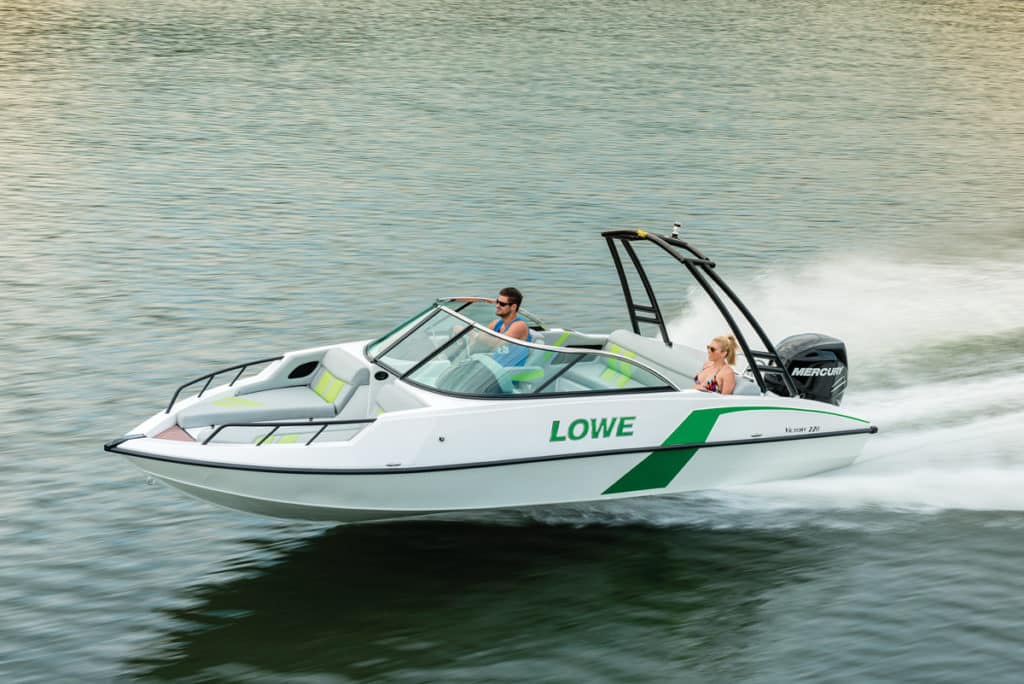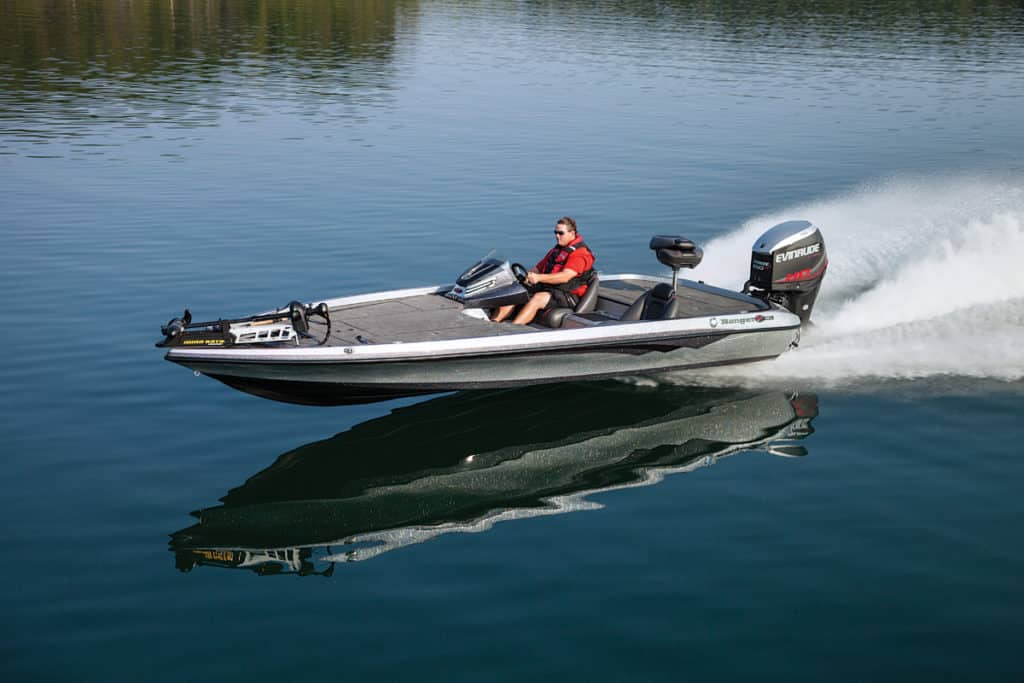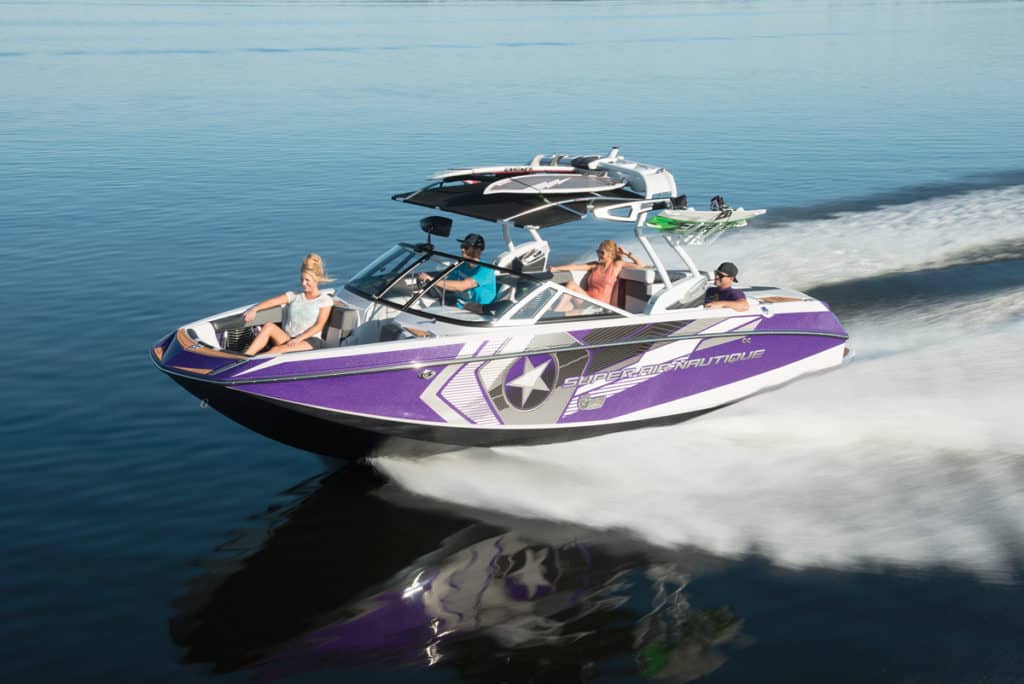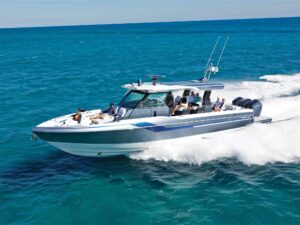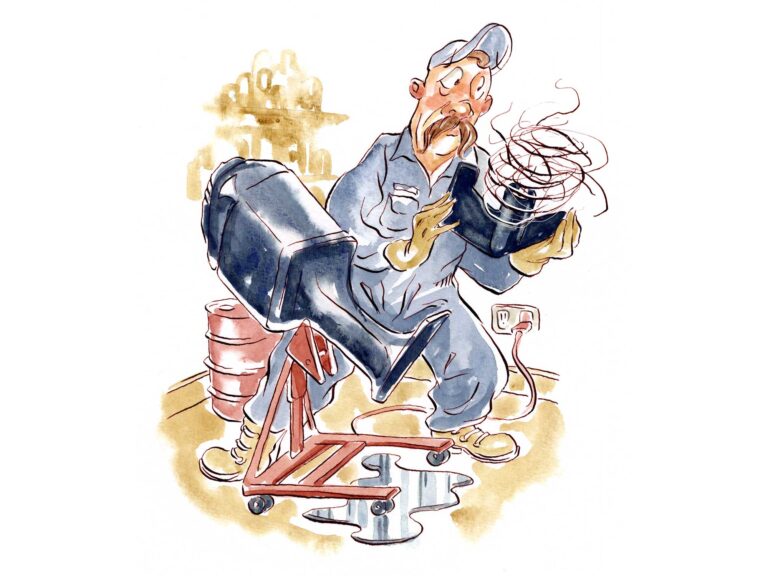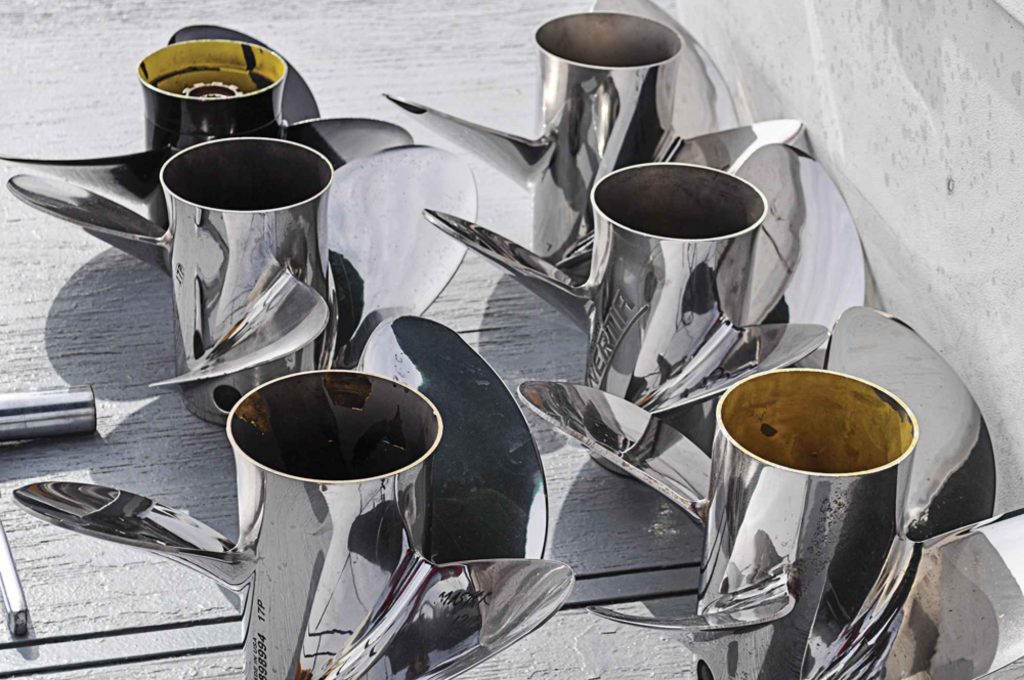
Your propeller affects every aspect of your boat’s performance: acceleration, handling, ride, turning, fuel efficiency and top speed. The trick is finding the right prop for your boat, and the right prop for how you use your boat.
It would be easy if props were simple, but boat propellers are science and engineering, tribal knowledge, feel, art and, yes — a little magic. Like the ocean, the subject is broad and deep, and those attempting to navigate it often find the endeavor is fraught with rough spots. As such, many boaters find it hard to solidify propeller knowledge.
On the theory that smaller chunks are easier to swallow, we’re going to zoom in and focus primarily on a smaller piece of the propeller pie. Join us as we define and explain the parts of the propeller. This should prove a neat refresher for old salts, while others will be provided the basis for intelligent conversation with boat dealers, prop vendors and fellow boating enthusiasts.
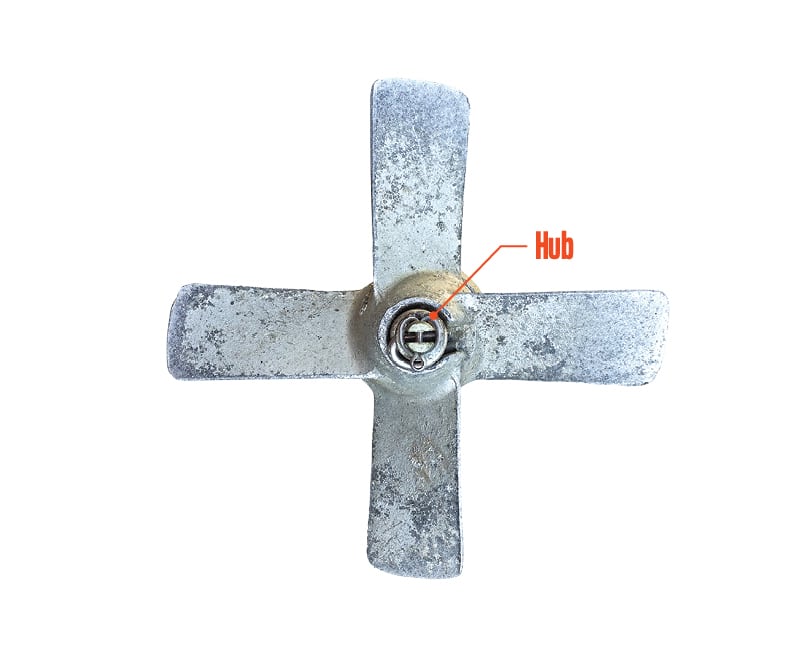
What It Is: This is the center round portion, sometimes called the barrel, or boss, of the propeller. What It Does: It is the attachment point for the blades and for some props; the hub also includes the center hub, which is typically splined to mate the prop to the propeller shaft. On many propellers, the engine’s exhaust exits directly through the hub. Boating Magazine
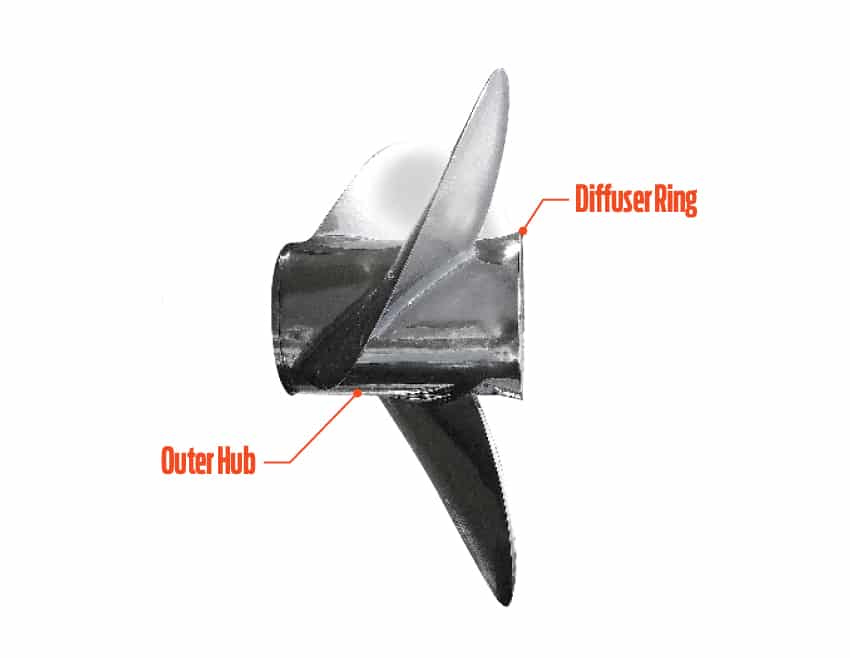
What It Is: On through-hub exhaust propellers, the exterior hub surface is in direct contact with the water. What It Does: The outer hub forms the attachment point for the blade roots and, along with the inner hub, creates the tunnels that are the exhaust passages. Sometimes it has exhaust ports as well. Diffuser Ring
What It Is: It’s a flared rim on the aft end of a through-hub-exhaust propeller’s hub. What It Does: A flared boss — aka diffuser ring — prevents exhaust gases from feeding back into the blades and diminishing thrust. It does so by creating a pressure difference. Boating Magazine
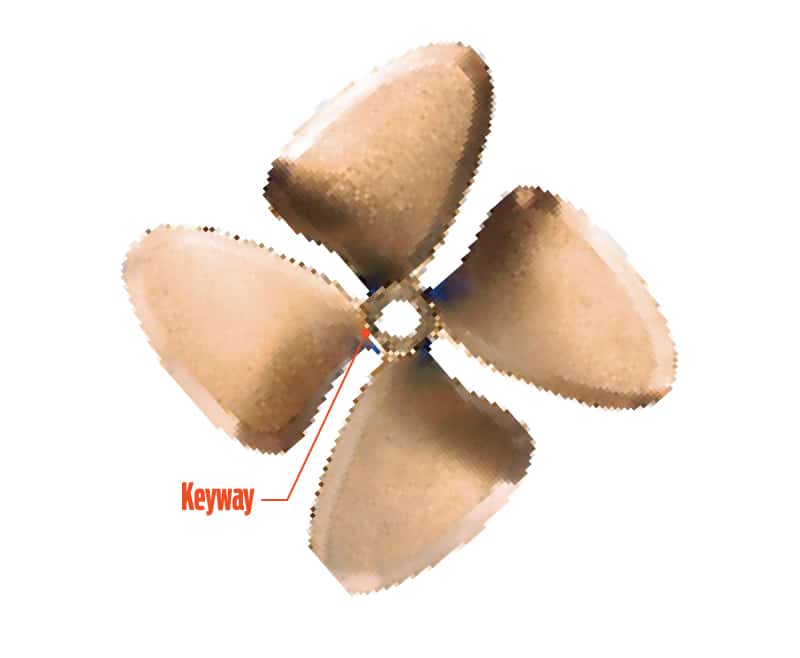
What It Is: A key is a rectangular piece of metal machined to fit in the keyway. What It Does: The key transmits the rotational forces of the prop shaft to the propeller; it could be said the prop is prevented from spinning free by the key. Keyway
What It Is: This is a machined slot or groove in the hub of a propeller. What It Does: The keyway allows the prop and shaft to mate to each other; corresponding machined slots on each are filled by the “key,” a rectangular piece of metal. Boating Magazine
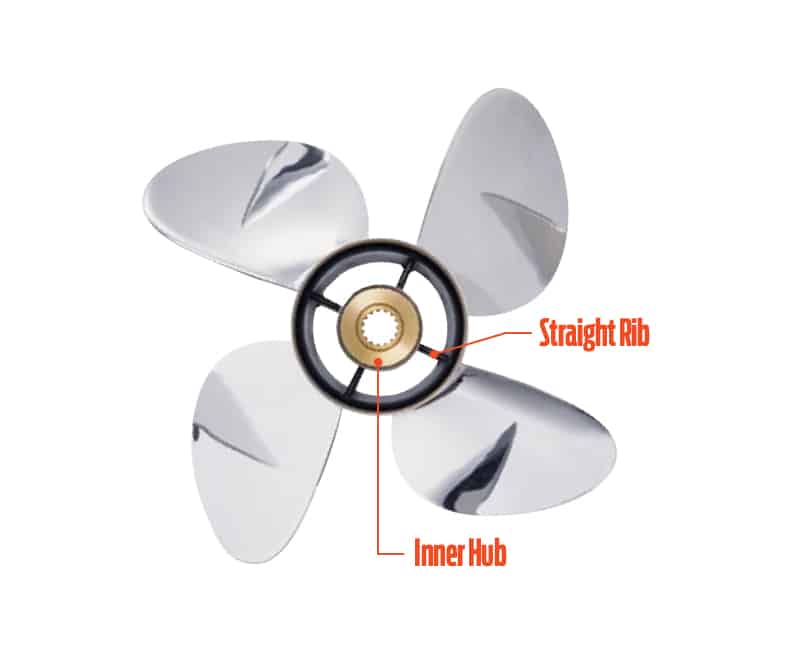
What It Is: Many propellers have a sacrificial composite center between the hub and the splines. What It Does: Should the propeller strike a hard object, the inner hub will break or “spin,” protecting the drivetrain. When this happens, one is said to have “spun the hub.” Rib
What It Is: On through-hub exhaust propellers, the ribs are the connections between the inner and outer hub. What It Does: Ribs create the exhaust passages in a through-hub exhaust prop. Ribs are usually either parallel to the propeller shaft (“straight”) or parallel to the blades (“helical”). Boating Magazine
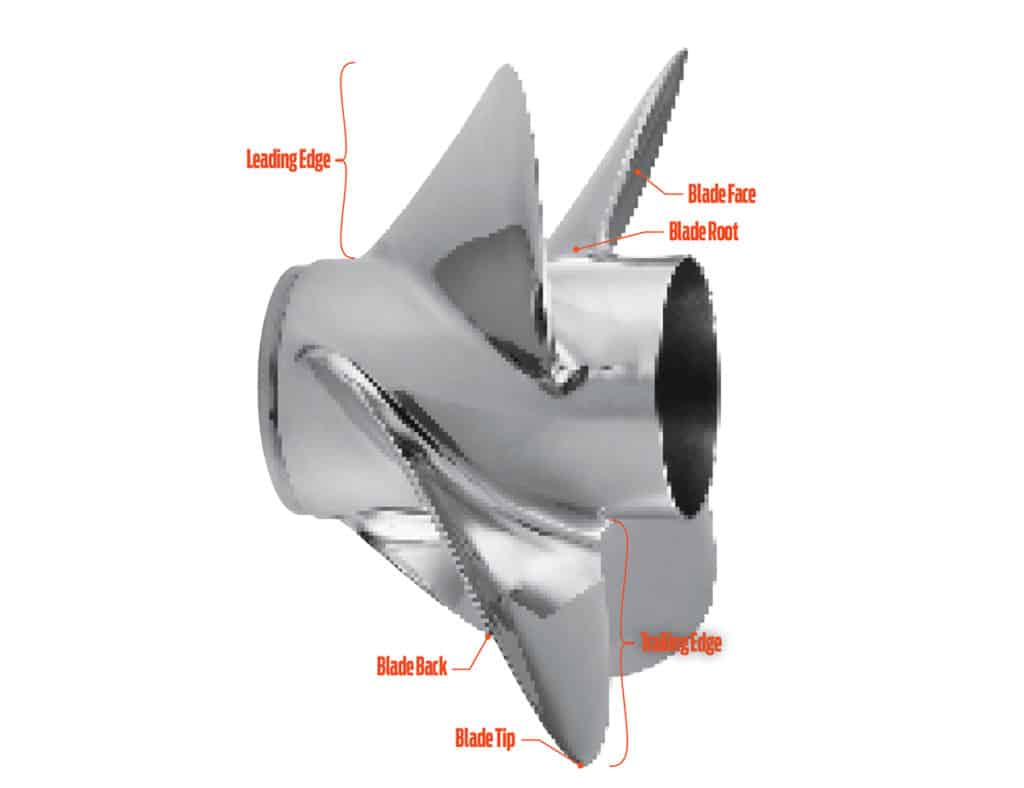
Leading Edge
What It Is: That is the forward part of the blade adjacent to the forward part of the hub. What It Does: The leading edge of the propeller advances toward the water flow, allowing the prop to enter and deliver water across the blade face. Trailing Edge
What It Is: This is the aft edge of the blade adjacent to the aft portion of the hub. What It Does: The aft edge of the propeller blade retreats from the water flow. It must allow water to cleanly “release” from the blade face for maximum efficiency. Blade Tip
What It Is: The tip is the part of the blade farthest from the propeller hub. What It Does: The blade tip travels the most distance in a revolution and therefore performs most of the work done by the blade in propelling the boat. Blade Root
What It Is: The point at which the blade attaches to the hub is the blade root. What It Does: The root describes the smallest diameter circle, thus traveling the shortest distance in a revolution. It’s the point where the “nominal” pitch is measured on the propeller blade. Blade Face What It Is: The face is that side of the blade facing aft, also known as the pressure side. What It Does: The pressure face is the part of the blade that pushes water when the boat is moving forward. Blade Back
What It Is: The side of the blade facing forward, known as the negative pressure, or suction, side of the blade is the blade back. What It Does: The blade back is the first part of the propeller to meet the water in a revolution and is usually shaped like a foil in cross-section to create a difference in pressure. Boating Magazine
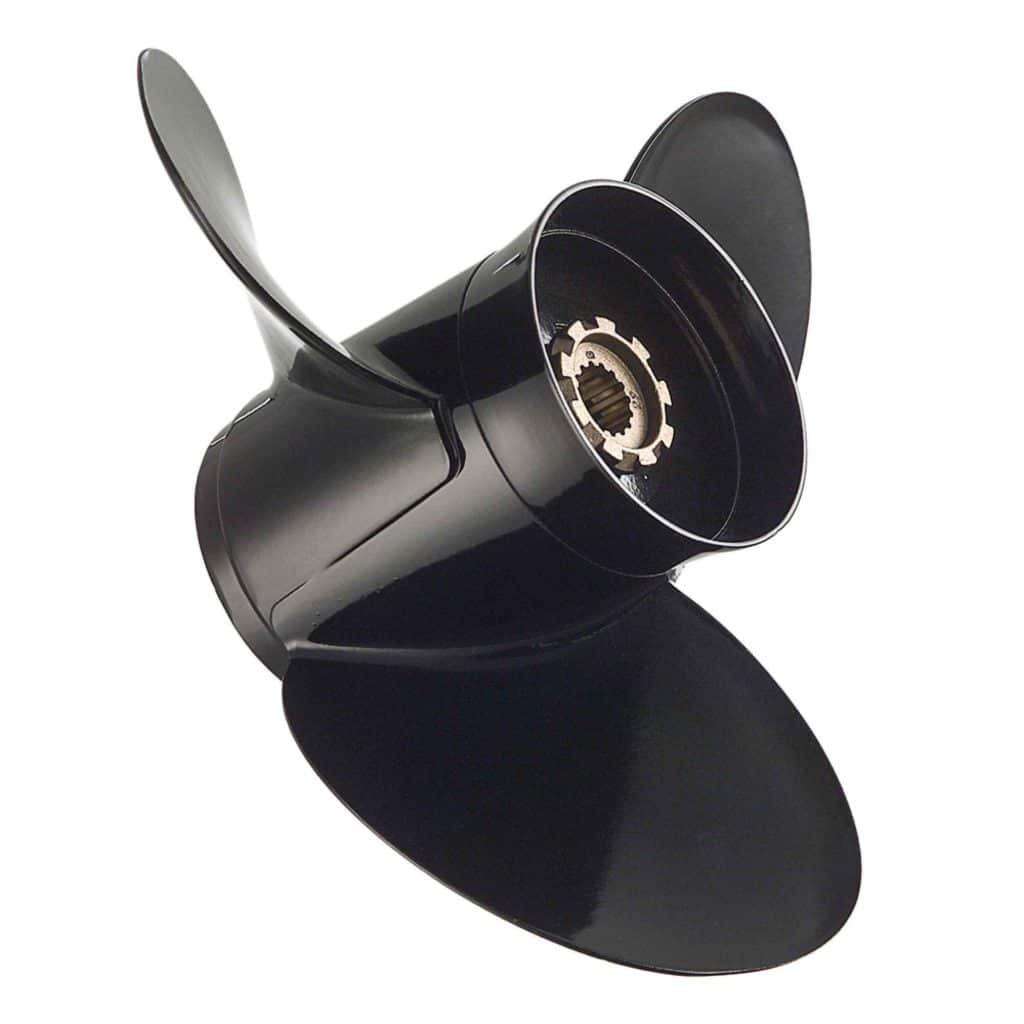
A single-blade propeller would be the most efficient, even though it transmits less thrust, since it would create the least drag — if the vibration could be tolerated. As blades are added, efficiency decreases, but so does the vibration level. Most propellers are made with three blades as a compromise for vibration, convenient size, efficiency and cost. Boating Magazine
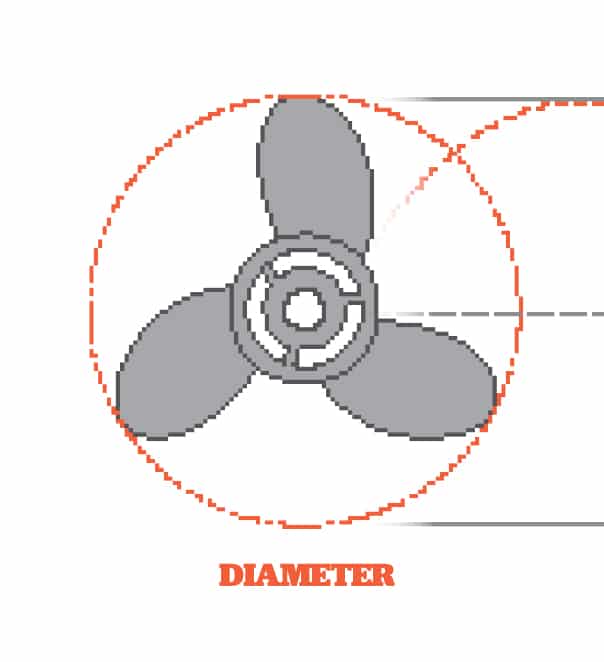
Diameter is the distance across the circle swept by the blade tips. Generally, the larger the diameter, the more boat-driving control (especially in rough water) that the propeller will provide and the more power it can absorb from the engine and transmit to the water. However, diameter will be limited by the engine gear-case size, draft considerations and aperture clearances, and increased diameter also increases drag while it increases thrust. As a result, in many instances, smaller propellers, which run at higher rpm, are used instead of larger-diameter props running at lower rpm. Boating Magazine
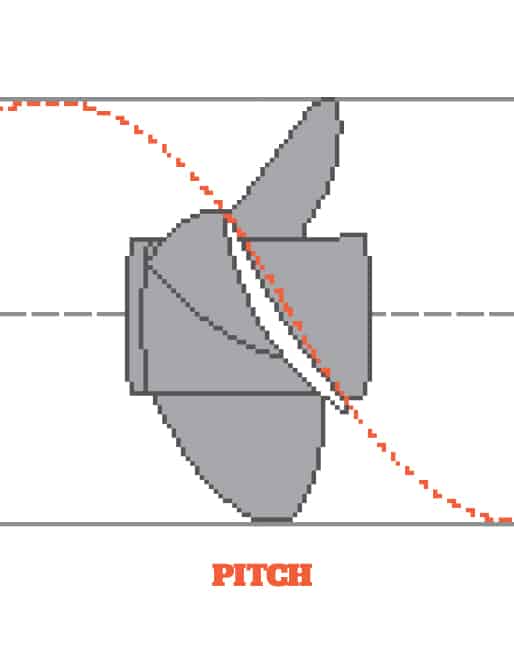
Pitch is best described as the distance that a propeller would move in one revolution if it were moving through a solid, like a screw in wood. Theoretically, a propeller with a 21-inch pitch would move forward (taking the boat with it) 21 inches in one revolution, though in reality the actual distance is somewhat less. It is important to note that pitch is not the blade angle — and in fact, most prop blades have a varying angle in order that the pitch is kept constant. This is because the root sweeps a smaller circle than the tips, and so the tips are given a shallower angle than the roots, resulting in the characteristic twist of most propeller blades. In general, more pitch means faster speed but decreased rpm; less pitch means decreased boat speed while raising engine rpm. It’s key to mating most props with most boat-engine combinations. Boating Magazine
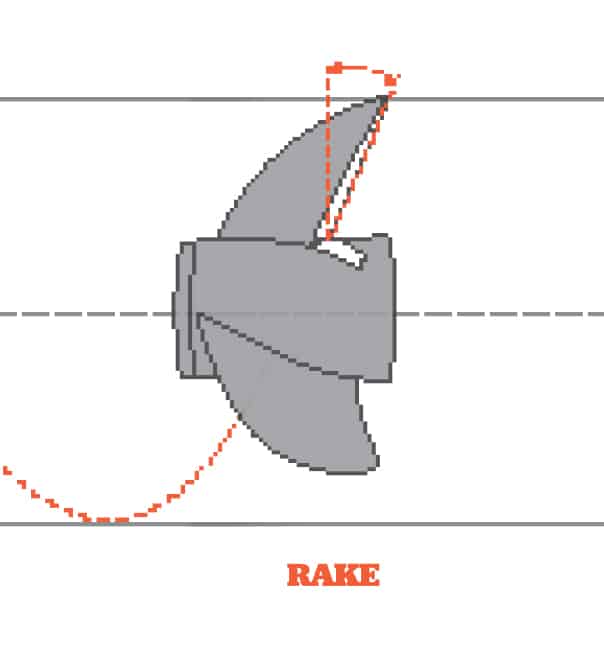
Rake is the angle at which a propeller’s blades are set relative to the hub. Blades that tilt back radically from the hub are said to have “high rake.” Blades that are set perpendicular to the hub are said to have little to no rake. Higher rake angles improve the ability of the propeller to operate in a surfacing condition (like on performance and racing boats). When surfacing, higher blade rake can better hold the water as it is being thrown off into the air by centrifugal force, and it creates more thrust than similar but lower rake. On lighter, faster boats, with a higher engine or drive transom height, higher rake often will increase performance by holding the bow of the boat higher, resulting in higher boat speed due to less hull drag. Boating Magazine
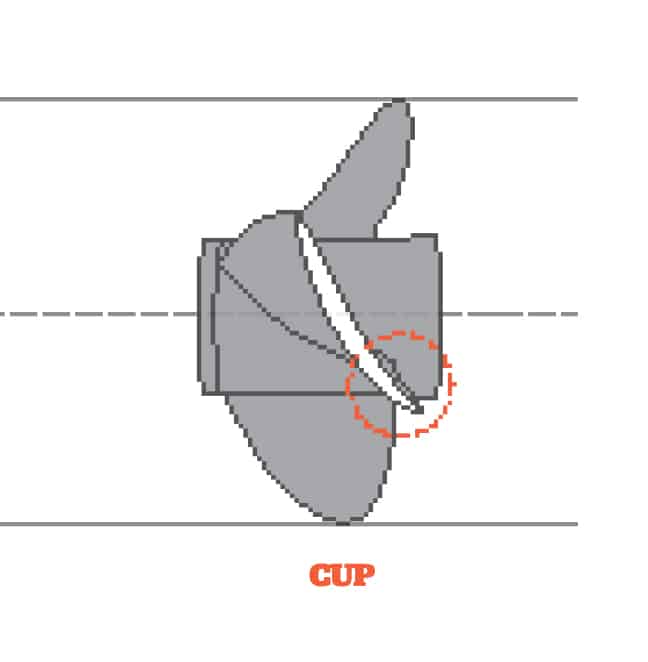
When the trailing edge of the blade and/or part of the tip is formed or cast with an edge curl (away from the boat), it is said to have cup. Cup permits the propeller to hold water better and typically adds about a half-inch (12.7 mm) to 1 inch (25.4 mm) of pitch. Originally, cupping was done to gain the same benefits as just described for progressive pitch and curved or higher rake. However, cupping benefits are so desirable that nearly all modern, recreational, high-performance or racing propellers are cupped. Cupping usually will reduce full-throttle engine speed about 150 to 300 rpm below that of the same pitch propeller with no cup. A propeller repair shop can increase or decrease cup to alter engine rpm to meet specific operating requirements on most propellers. Cup also allows sterndrive and outboard props to run at higher mounting heights and trim levels because, basically, it provides more grip on the water. Ventilation is also reduced by cup. Cup is usually of little value on propellers used in heavy-duty or work applications in which the propeller remains fully submerged. Boating Magazine
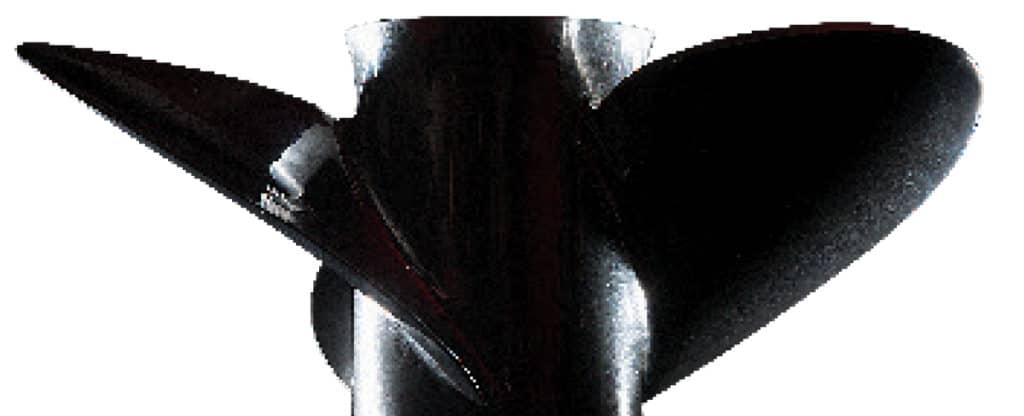
Ventilation occurs when air from the water’s surface or exhaust gases gets drawn into the propeller blades; the propeller over-revs, losing much of its thrust. Outboards and sterndrives have anti-ventilation plates to prevent this (the boat’s bottom serves this function with inboards). At lower pressures water boils at lower temperatures. Cavitation occurs when water boils at the lower pressures on the back of the blade, creating bubbles that can explode and actually damage the prop when they reach the high pressure on the blade face. Boating Magazine
Different propeller configurations exist for different boating applications. While there are too many variations and applications to list all in this article, here are many popular types.
